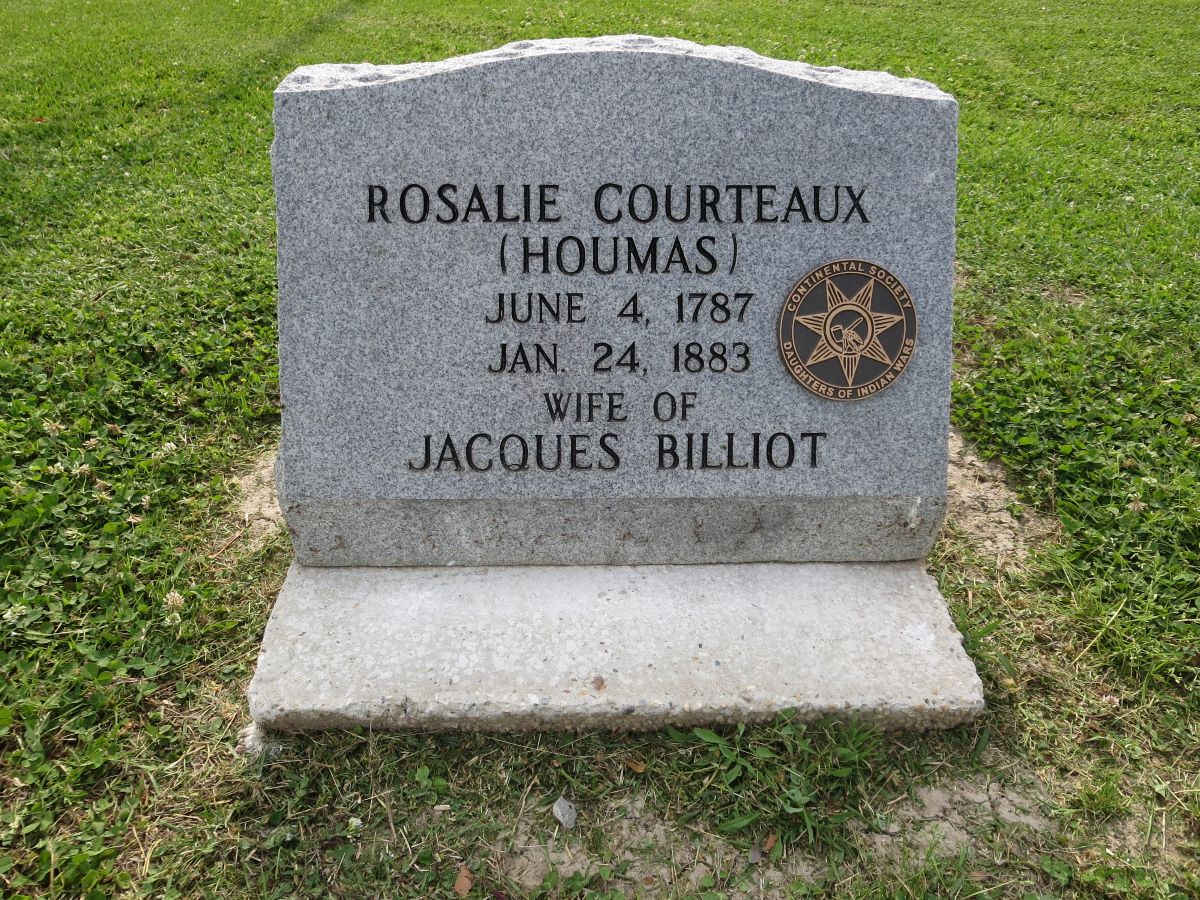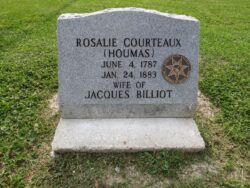Rosalie Courteaux
An important woman leader in the Houma Nation’s history, Rosalie Courteaux defended her people against non-Indian encroachment in the nineteenth century.

Erin Greenwald
A recent gravestone at Dugas Cemetery in Montegut, Louisiana, commemorates the life and death of Houma leader Rosalie Courteaux.
Rosalie Courteaux (also spelled Courteau) Billiot stands as one of the most influential figures in the history of the United Houma Nation. Born in the latter 1700s after the tribe moved down Bayou Lafourche from the Donaldsonville area, she lived for decades in the vicinity of Montegut. Generally recognized as the single-most important woman leader in the Houma Nation’s history, Courteaux also symbolizes qualities that modern tribal members value. Thus, she occupies a prominent position both in tribal history and folklore.
Like many important historical figures, details of Courteaux’s life have crossed into myth, and the folklore surrounding her obscures the few particulars that modern researchers can glean. She was born around 1787 on the banks of Bayou Lafourche near modern Plattenville. In the early 1800s she migrated down Bayou Lafourche and then Bayou Terrebonne, spending most of her life around Montegut. Courteaux married Jacques Billiot around 1808, and the couple produced a large family that formed several different branches of the modern United Houma Nation. She died around 1883, and, while some documents say that she was buried at St. John the Baptist Cemetery, most indicate she was actually buried at Dugas Cemetery in Montegut. Several tribal members placed her tombstone at the latter cemetery in the 1980s. Courteaux was a woman of property and enjoyed the respect of tribal members and the non-Native community.
Sparse though the documentary evidence of her life is, the folktales surrounding her make up a rich body of oral literature—that Courteaux fought at the Battle of New Orleans with Andrew Jackson, that she fled down Bayou Terrebonne after being burned out of her home by white people intent on taking her land, that she always wore a large knife on her hip to defend herself against attackers. Some of these stories are plausible, but most reveal far more about the attitudes of her admirers and detractors than they do about Courteaux herself. Still, these tales come back to the same theme—that Courteaux stood as a defender of her tribe against non-Indian encroachment, and that she defended her people and her land against outsiders who sought to overwhelm the Houma Nation. In that sense, Courteaux stands not only as an individual but also as a link in a chain of strong, capable Houma matriarchs stretching backward and forward in time. As with various historical figures who have crossed into folk status, her symbolic importance has eclipsed many of the factual details of her life. Courteaux maintained her Indian identity while navigating changing cultural and environmental landscapes, displayed continual strength in the face of adversity, and illustrated that sometimes surviving in the face of hardship and persecution is a victory. In her ability to draw strength from the past while looking toward the future, Courteaux embodies qualities that members of the modern Houma Nation value.
